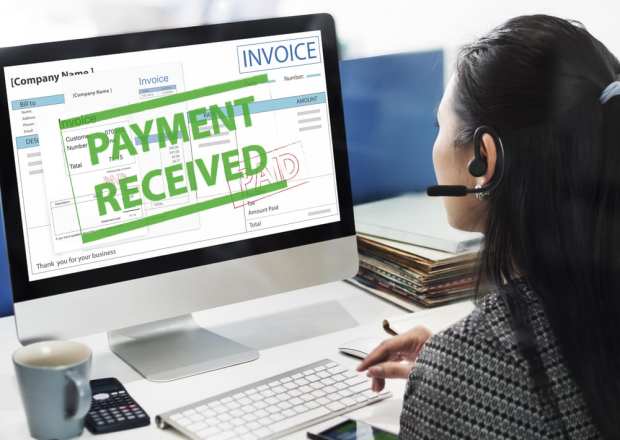Accelerating Accounts Receivable Starts With The Invoice

Late payments are a threat to any business, but especially for smaller firms, longer days sales outstanding (DSO) timeframes can be a company killer.
The risk of late payments has opened up conversations about how businesses can improve their collections practices and secure the cash they’re owed without damaging the buyer-supplier relationship.
But while better collections practices are an important piece of cash flow management, tackling the late payments issue must also include practices aimed at preemptively avoiding them in the first place. According to Biller Genie CEO Thomas Aronica, that strategy begins with the invoice itself.
“There is a very significant delay in the invoice-to-cash cycle,” Aronica told PYMNTS in a recent interview. “It takes about six days for a service-based business to create an invoice for a product or service they’ve already delivered. You can imagine: six days to create the invoice, a couple of days to send it out, and then the customer has to process it and make a payment, perhaps by mailing a check.”
When businesses rely on manual, paper invoicing, they’re setting themselves up for longer DSO times from the get-go. The knock-on impact of that initial delay isn’t just about receiving payment later, though. As Aronica highlighted, this strategy also impacts the bottom line due to the high costs associated with manual accounts receivable (AR) practices.
For each invoice generated, businesses face the cost of paper, ink, manual labor, postage, processing and other “hidden costs” that often go unnoticed, Aronica noted.
“The reason I say ‘hidden cost’ is because there is no line item on a profit and loss statement that says ‘invoice processing cost,'” he explained. “It’s buried into labor costs, admin fees, office expenses, printing and production, postage – and often, business owners don’t realize there are inherent costs associated with billing and invoicing.”
Reduced Cost, Faster Receivables
Automating AR processes like invoice generation can significantly lower those costs by promoting digitization. As Aronica also noted, automation accelerates invoicing to jump-start the process of getting paid, which can have a significant impact on the invoice-to-cash cycle.
But accelerating receivables doesn’t end there.
Unique to the services and B2B industries is the fact that those services or goods are provided before payment is made, opening up the opportunity for an end customer to, in theory, take as long as they would like to settle the bill – even if that bill arrives quicker. Aronica noted an array of strategies that businesses should deploy to encourage payers to settle invoices faster.
One of the most effective approaches is to offer a choice of payment method.
“Offering payment methods that are convenient to the payee gives them the ability to interact with you in a time and method that is best for them,” he said. “If your office is only open from 9-5, and your payee is also working from 9-5 and cannot contact you during that time, they may only have the ability to make a payment at midnight. If you don’t have the ability to collect that payment at midnight, it will cause delays.”
Aronica said there is not necessarily one single payment method that will support faster invoice settlement. Rather, it’s the choice itself that encourages businesses to pay faster, whether it be through card, ACH or Apple Pay.
“Every payee is different,” he said.
Tackling a Late Payment
Faster invoicing and payment choice promote faster invoice-to-pay cycles, but late payments have been, and likely always will be, a cash flow hurdle for businesses. As Aronica noted, there are several strategies companies can use to tackle this inevitability.
Most important, he said, is to establish clear guidelines – and stick to them.
“Being consistent about your approach is first and foremost,” he said. “You need to set up practices for that follow-up sequence, how you’ll reach out to customers and what you’re going to say – that escalation messaging.”
In addition to the message itself, Aronica emphasized the importance of how companies deliver that message, whether it’s through email or text message, based on customer preferences.
Further, developing a late fee strategy can also be an important way to encourage a customer to take a message about past-due invoices seriously. Unfortunately, late fees are among companies’ biggest AR management challenges, Aronica said, pointing to the friction associated with manually calculating and entering those late fees within accounting platforms. As a result, while many companies have late fee policies in place, few actually enforce them.
This is one area in which AR solutions’ integration with back-office accounting, ERP and other software platforms is critical. In addition to ensuring that late fees are automatically calculated and applied, data integrations ensure that those fees are accounted for when closing the books and managing financials.
Aronica pointed out that back-office integration will be an important part of Biller Genie’s strategy moving forward, with plans to expand the number of integrations its AR solution can support this quarter. By ensuring that accounts receivable operations can communicate with all other financial and strategic areas of the enterprise, companies large and small can gain greater transparency and control over the invoice-to-cash cycle – an initiative that can address late payments more quickly and help to avoid them altogether.
